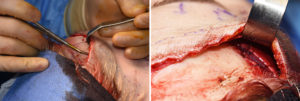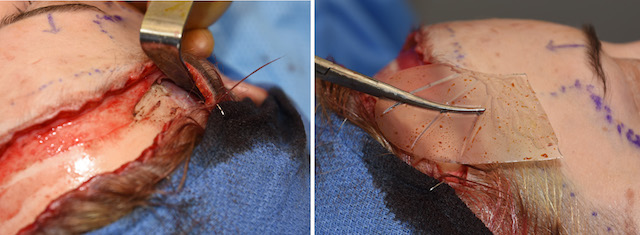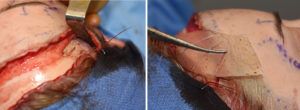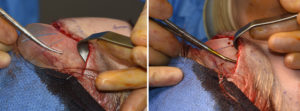Temporal implants offers a permanent solution to hollowing or excessive concavity by the side of the eye. (non-hair bearing temporal region) Placed in a subfascial location they offer a safe plane of dissection and placement with no risk of neurovascular injury. Their typical placement in through a small vertical scalp incision behind the temporal hairline. With an incision placed above the Y-split of the superficial temporal artery, the path of dissection to the subfascial pocket above the temporalis muscle between the hairline and the lateral orbit is both direct and unobstructed.
But a hairline incision is not the only method of insertion of temporal implants. A newer technique that I have developeed is from a retroauricular skin incision one top of and behind the ear. This offers a ‘scarless’ placement method. Another insertion method is through a hairline or pretrichial incision. This would not be done only for temporal implant placement but would be an incisional approach that is opportunistic…meaning if a pretrichial browlift and/or frontal hairline advancement is also to be performed.

The most scarless approach to temporal implant placement is to take advantage of a frontal hairline incision that has already been made for other forehead/scalp procedures. Inserting the implant through a superior approach offers the most direct and uncomplicated method of placement.
Dr. Barry Eppley
Indianapolis, Indiana





